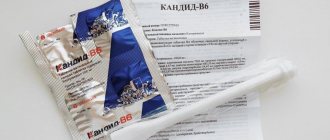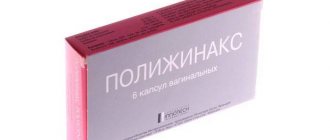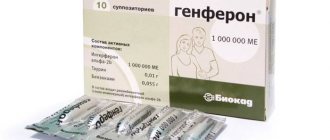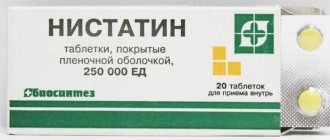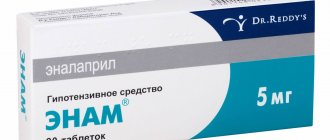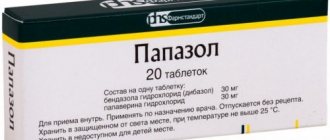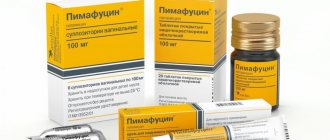Clotrimazole is prescribed for the treatment of fungal infections of the skin and mucous membranes. This is a topical antifungal agent. Often used to treat the external genitalia. The action of the drug helps to destroy pathogenic microorganisms and alleviate the symptoms of the disease. Not prescribed to patients under twelve years of age. Therapy should be carried out under the supervision of a physician.
Included in the list of the most effective medicines according to the World Health Organization.
Release form and storage conditions
Clotrimazole vaginal tablets are available in a dosage of 100 mg, 6 pieces in a blister. 1 blister is packed in a cardboard box, which contains instructions for use of Clotrimazole.
Available in the form of white tablets, their surface is smooth to the touch. They have an oblong biconvex shape. The ends of the tablets are different: one is rounded and the other is flat.
The drug must be stored in a dark and dry place at a temperature not exceeding 25°C . Vaginal tablets should not be accessible to children. The shelf life is 36 months from the date of manufacture.
Composition and mechanism of action
The active ingredient is clotrimazole. In one dose its content is 100 mg. In addition, vaginal tablets contain excipients :
- Potato starch;
- Lactose;
- Bicarbonate of soda;
- Adipic acid;
- Magnesium stearate;
- Colloidal silicon dioxide;
- Sodium lauryl sulfate.
Clotrimazole belongs to a group of antimicrobial drugs with a wide spectrum of effects. Due to the presence of clotrimazole as an active substance, the drug has a negative effect on various pathogens :
- Pathogenic fungi (yeast-like, mold, dermatophytes);
- Staphylococcus;
- Streptococci;
- Trichomonas;
- Pathogens of lichen versicolor and erythrasma.
The drug acts locally on the sites of pathogens, a small percentage (5 – 10%) of the active substance enters the blood. It changes the structure of the fungal shell, which leads to their destruction.
On the vaginal mucosa, a high concentration of the active substance lasts up to 3 days.
In small doses, Clotrimazole can slow down the development of fungi (fungistatic effect). A significant dosage has a fungicidal effect, that is, it kills pathogenic fungi.
general description
CLOTRIMAZOLE has an antifungal and antibacterial effect on a wide range of pathogenic microorganisms.
It destroys cell membranes and penetrates them, destroying the life-supporting systems of fungi and their spores.
How does it act on pathogenic microorganisms?
Thanks to the action of the drug, the speed of oxidative enzymes in the affected cells is reduced to a minimum, and the level of hydrogen peroxide concentration increases. As a result of intoxication, the body of the parasitic cell is destroyed and the cell itself dies.
CLOTRIMAZOLE, in addition to fighting growing and dividing microorganisms, also has a protective effect, preventing new infections from entering the body.
The drug is highly effective against damage to the body by strains of the most common fungi.
Spectrum of action
CLOTRIMAZOLE is indicated for the destruction of fungi:
- Candida albicans (thrush)
- Candida spp. (candidiasis) and other genus Candida
- Trichophyton mentagrophytes, Microsporum canis, Epidermophyton floccosum, Trichophyton rubrum, Malassezia furfur (lichens affecting the skin, hair and nails)
- Staphylococcus spp. (staphylococci)
- Streptococcus spp. (streptococci)
- Corynebacterium minutissimum (erythrasma)
- Gardnerella vaginalis and Bacteroides
- Trichomonas vaginalis (trichomoniasis)
Advice
Does not poison healthy cells during treatment!
CLOTRIMAZOLE is practically not stored in the blood, mucous membranes and skin. Non-critical, up to 10% accumulation occurs only in the stratum corneum of the epidermis and in the keratin of the nails. The drug enters the liver in an inactive state and is excreted in feces and urine.
Indications for use
Vaginal tablets have a fairly large list of indications. Most often, Clotrimazole is used to treat vaginitis (inflammation of the vagina) caused by pathogenic fungi (Candida genus).
However, thrush is not the only indication. I use clotrimazole in the form of vaginal tablets in a number of cases :
- Treatment of genital infections caused by pathogens sensitive to the active substance (trichomoniasis, vaginitis caused by cocci);
- Sanitation of the genital tract before gynecological manipulations;
- For prophylactic purposes, it is used several days before childbirth. This is necessary in order to protect the child from a sudden infection. Such prevention is necessary if a woman repeatedly experiences thrush during pregnancy.
Dosage and method of administration
Clotrimazole in tablet form is intended for intravaginal use (tablets must be inserted into the vagina).
Standard treatment regimen : 1 vaginal tablet at night, the course of treatment is 6 days.
How to insert Clotrimazole vaginal tablets : The tablets must be inserted deep into the vagina while lying on your back with your knees bent. Before using the tablets, you must toilet the external genitalia and wash your hands well.
In some cases, the doctor may prescribe a different treatment regimen: 1 tablet 2 times a day (in the morning and before bed). In this case, the course of treatment is reduced to 3 days.
Adolescents aged 12 years and older are also advised to use vaginal tablets. But girls under 12 years of age are not prescribed Clotrimazole in this form.
Dissolution of vaginal tablets occurs under the influence of vaginal secretions. If a woman has vaginal dryness syndrome, there may be discharge of undissolved parts of the drug from the vagina. That is why deep injection of tablets is recommended.
You should not use the drug during menstruation , since the active substance is washed out of the vagina and the effectiveness of treatment is significantly reduced.
If inflammation of the external genitalia is noted, treatment is supplemented with dosage forms for external use (cream, ointment).
For the purpose of prevention, a single use of the drug is prescribed before childbirth.
Reviews and prices
The drug has been used in medical practice for more than thirty years, but doctors continue to prescribe different dosage forms for the treatment of fungal infections. The effectiveness has been proven through numerous studies. Experts appreciate the possibility of topical use with a low risk of complications.
The average price of 20 milliliters of cream (1%) is 80 rubles. An ointment with a similar volume and concentration costs 100-120 rubles. Six vaginal tablets can be bought for 55-70 rubles.
Side effects
Since the drug is practically not absorbed into the blood, the instructions for use of Clotrimazole vaginal tablets do not indicate side effects from internal organs. Most often, allergic reactions of the body to substances included in the drug are observed . Allergies can manifest as urticaria, angioedema and anaphylactic shock.
Urticaria is characterized by itching and burning in the vaginal area and external genitalia. Visually, you can notice redness or the presence of rashes.
Quincke's edema is manifested by hyperemia (local redness) and swelling of the genital organs. There is discomfort and irritation in the vagina.
Anaphylactic shock is the most severe form of allergy. It develops in a matter of minutes or in a few hours. There is a sharp decrease in blood pressure and loss of consciousness. In severe cases, respiratory and cardiac arrest occurs.
If the above symptoms appear, you should stop using the drug and consult a doctor.
Contraindications
It is necessary to stop using vaginal tablets if::
- The patient is under 12 years of age;
- The woman previously had hypersensitivity to any substance included in the drug;
- First trimester of pregnancy;
- Menstruation has begun.
Do not use the medicine without consulting a specialist in the following situations:
- If thrush occurs for the first time, then independent use of Clotrimazole is contraindicated;
- If the patient is 60 years or older;
- If there is a frequent relapse of the disease (more than 2 times in six months);
- If you have previously experienced an allergic reaction to the use of intravaginal antifungal agents;
- If your sexual partner has sexually transmitted infections;
- If a woman has had an STD (sexually transmitted disease);
- There is a pregnancy or is suspected of being pregnant.
Use during pregnancy and lactation
The use of Clotrimazole in the form of vaginal tablets during pregnancy and breastfeeding is advisable when the risk is justified. That is, the benefit for the woman will be significantly higher than the perceived threat to the child.
Scientific data proves the safety of using the drug by pregnant women . No negative effects on the fetus (malformations) were detected. However, only the attending gynecologist should decide on treatment with this drug.
How to use Clotrimazole
An important rule in the treatment of gynecological diseases is adherence to the schedule. Clotrimazole can be used in gynecology intravaginally, i.e. inside the vagina, and both suppositories and vaginal tablets are suitable for this. The standard regimen, which is prescribed by a specialist, assumes that for three days it will be necessary to administer one tablet twice a day. If the treatment regimen provides for a weekly interval, then one tablet per day is enough. It is recommended to administer it at night because the undissolved part of the medicine may be released.
Interaction with other drugs
The activity of Clotrimazole can be reduced by the following drugs when used together:
- Nystatin;
- Dexamethasone in large doses.
The intravaginal form of Clotrimazole may also reduce the activity of certain drugs. For example, the simultaneous use of vaginal tablets and polyene antibacterial drugs or Amphotericin B reduces the healing properties of the latter.
During and after treatment (within 7 days) with Clotrimazole in the form of vaginal tablets, you must stop using condoms .
This is due to the ability of the drug to destroy latex. It is necessary to choose another method of contraception to avoid unwanted pregnancy.
Overdose
When applied to the skin and intravaginally, there is no risk of acute intoxication, since clotrimazole enters the systemic circulation in very small quantities.
In case of accidental ingestion of Clotrimazole, nausea, anorexia, vomiting, gastralgia, and liver dysfunction are possible. In rare cases, pollakiuria, hallucinations, drowsiness, and allergic skin reactions are observed.
In this case, the patient is prescribed enterosorbents and symptomatic treatment. Gastric lavage is performed in situations where a life-threatening dose was taken within the previous hour, as well as in the presence of visible symptoms of an overdose (nausea, dizziness, vomiting).
special instructions
To achieve a positive effect, it is necessary to treat both sexual partners simultaneously. Otherwise, a relapse (recurrence) of the disease may occur. Doctors recommend treating all areas of the body affected by the fungus at once.
It is necessary to ensure that the drug does not end up in the hands of children and does not get into the eyes. It should not be eaten.
You should stop using the drug if:
- Abdominal syndrome (abdominal pain of varying intensity) is noted;
- A woman complains of sudden bleeding from the vagina;
- There is dysuric syndrome (frequent and painful urination);
- Concerns about nausea, vomiting, diarrhea;
- After using the drug, negative consequences occurred in the form of swelling, itching, burning and redness;
- A woman complains of copious and foul-smelling discharge from the genital tract;
- There is a persistent increase in body temperature to febrile values (above 38°C);
- There are open wounds in the external genital area or in the vagina;
- Pain in the back.
Analogs
Clotrimazole vaginal tablets can be replaced with drugs with a similar composition and principles of action.
Candide-B6 . The active ingredient of these vaginal tablets is clotrimazole. 1 tablet contains 100 mg of active ingredient. Tablets are available in packs of 6 pieces. Indications are the same as for Clotrimazole. The only contraindication is the presence of an allergy to the active substance. Take 1 tablet before bedtime. The course of treatment is 6 days.
Candide . Used to treat thrush and trichomoniasis. 1 tablet contains 100 milligrams of active ingredient. The course of treatment is determined by the doctor (from 1 to 6 days). Contraindications are:
- First trimester of pregnancy;
- Having an allergy to the components of the drug.
Clotrimazole-Akrikhin . Indications are identical to previous drugs. Treatment lasts from 1 to 6 days. Treatment is not carried out during menstruation.
Price of Clotrimazole tablets
The demand for an antifungal agent is due to its effectiveness, safety, and availability. After visiting a doctor, the question becomes relevant: how much does Clotrimazole cost? It would be wrong to assume that it can be bought in an online store, like a contraceptive from a catalog. If quality is at stake, then it is cheaper to order from an online pharmacy, provided that the medicine or analogues are in stock. The price of Clotrimazole tablets (100 mg) varies, 6 pieces - from 20 to 55 rubles.
Other forms of release of Clotrimazole and their use
Cream Clotrimazole 1% . Available in 20 or 30 gram tubes. This dosage form is used to treat:
- Thrush in women and men;
- Dermatomycosis (fungal skin infection);
- Lichen versicolor.
Clotrimazole 1% ointment . Available in 20 grams per tube. Indications for use:
- Dermatomycoses;
- Mycosis of the feet;
- Superficial candidiasis;
- Pityriasis versicolor.
Creams and ointments are used for external use 2 – 3 times a day . Before using these dosage forms, you must wash and dry the affected area. After which you need to apply a small amount of cream or ointment. The duration of treatment will be determined by a specialist.
Clotrimazole solution 1 % Available in 15 ml bottles. The solution is used in the following cases:
- Fungal diseases of the mucous membranes and skin;
- Mycosis of the feet;
- Candidiasis of the skin;
- Thrush;
- Pityriasis versicolor.
The solution is applied in small quantities to the affected areas of the skin up to 3 times a day. After the symptoms of the disease disappear, it is necessary to continue treatment . The duration of therapy is determined by the attending physician. For mycosis of the feet, the solution is applied after hygiene procedures to clean, dry skin.
Clotrimazole suppositories . Used to treat:
- Sexual infections;
- Candidal vulvovaginitis.
The drug is intended for intravaginal use. Prescribe 1 suppository at night. The course of treatment is 6 days.
Clotrimazole (Clotrimazolum): a synthetic broad-spectrum antifungal agent
The effectiveness of Clotrimazole has been tested by time. For several decades, since 1969, it has been used for the local treatment of fungal infections affecting the skin and mucous membranes
Clotrimazole
Active substance
The active substance of the same name, Clotrimazole, belongs to the class of azoles, their variety, imidazole derivatives.
The chemical name of Clotrimazole is 1-[(2-Chlorophenyl)diphenylmethyl]-1H-imidazole.
Formula – C12H17ClN2. It is a white crystalline powder that is odorless.
Practically insoluble in water, but soluble in ethyl alcohol and other organic solvents - ether, chloroform, propylene glycol.
Formula Clotrimazole C12H17ClN2
Mechanism of action
The action of Clotrimazole, like other imidazole derivatives, is based on the inhibition of enzymes of the Cytochrome P 450 system, which is involved in the synthesis of ergosterol, the main component of the fungal cell membrane.
Inhibition of Cytochrome P 450 automatically leads to disruption of ergosterol synthesis. As a result, the permeability of the cell increases and it dies. These largely determine the fungicidal effect of Clotrimazole - its ability to destroy pathogenic (disease-causing) fungi.
Ergosterol is not only a component of the cell membrane, but also a kind of hormone that ensures cell division and growth. Inhibition of its synthesis is accompanied by a fungistatic effect - slowing down the growth of the fungus.
Clotrimazole has a dose-dependent effect on pathogenic fungi, in small quantities it is fungistatic, in large quantities it is fungicidal. In this case, only the fungus-specific enzyme Cytochrome P450 is inhibited. The drug has no effect on similar enzymes in humans and mammals.
However, the fungistatic and fungicidal effect of Clotrimazole is not limited to inhibition of ergosterol synthesis alone. It blocks calcium channels, and thereby prevents the intracellular penetration of calcium. This leads to calcium depletion in fungal cells.
It also affects the state of other cellular organelles - it causes the destruction of lysosomes and reduces the number of ribosomes. Clotrimazole also inhibits other enzymes - peroxidases, which leads to cell death from excess hydrogen peroxide.
Due to disruption of ergosterol synthesis, its precursors, 14 L-methylsterols, accumulate, which also cause the death of the fungal cell.
The drug is deprived of the ability to be absorbed into the blood from the gastrointestinal tract (gastrointestinal tract). Therefore, it is only suitable for external use.
Recently, evidence has emerged that in vitro (in vitro, literally in a test tube), the drug inhibits the growth of atypically altered tumor cells. Its ability to inhibit peroxidase can be used in the fight against malaria pathogens, and blockade of calcium channels can be used in the treatment of sickle cell anemia.
Receiving mechanism
The starting material for the production of Clotrimazole is a benzene derivative, 2-chloro-toluene. Then, through successive chemical reactions involving a series of organic catalysts, the finished product, Clotrimazole, is obtained.
In the production of dosage forms, along with the main substance, auxiliary substances are also used. These are alcohols, sorbitan stearate, lactose monohydrate, magnesium colloidal silicon dioxide, potato starch, adipic acid, and other organic and mineral compounds.
Clotrimazole Indications
Indications
The drug is effective against many fungi that parasitize the skin - dermatophytes (genus Epidermophyton, Trichophyton, Microsporum), as well as yeast fungi of the genus Candida.
Other types of yeast-like and mold fungi are also sensitive to Clotrimazole, including Actinomycetes, Histoplasma, Cryptococcus, Blastomycetes, Malassezia, Aspergillus, and many others.
In addition, it is effective against certain types of bacteria. These are mainly gram-positive flora - staphylococci and streptococci, and to a lesser extent - corynebacteria.
Clotrimazole also has a detrimental effect on some gram-negative microorganisms - bacteroides, gardnerella vaginalis, as well as on some types of protozoa - Trichomonas vaginalis and amoebas that parasitize the gastrointestinal tract.
The scope of application of Clotrimazole includes:
- Dermatomycoses - athlete's foot, trichophytosis, microsporia
- Versicolor (pityriasis versicolor)
- Mycoses of the feet with damage to the periungual fold (fungal paronychia), nail plates (onychomycosis), interdigital spaces
- Oral candidiasis (candidal stomatitis)
- Thrush in women (candidal vulvovaginitis) and in men (candidal balanoposthitis)
- Other mycoses of the skin and mucous membranes caused by yeast-like and mold fungal flora
- Mycoses complicated by secondary bacterial infection - pyoderma, streptoderma
- Erythrasma is a pseudofungal disease affecting large folds of skin caused by corynebacteria.
- Trichomoniasis.
Clotrimazole is used not only for therapeutic purposes, but also for preventive purposes. It is prescribed to women during a course of antibiotic treatment to prevent thrush, as well as before childbirth to sanitize the birth canal.
Release forms
The drug is available in various dosage forms for external use:
- 1% cream, ointment and gel
- 1% spray and solution for external use
- Vaginal suppositories 100 and 200 mg
- Vaginal tablets 100, 200 and 500 mg
- 2% vaginal cream.
The drug is produced by many Russian and foreign pharmaceutical companies under the name of the active substance, or under numerous original names.
In Russia, along with domestic Clotrimazole, Indian drugs are common - Candide, Canihol, Funginal, Imidil.
The world-famous Glaxo Smith Klein also produces a drug called the active substance. Another, no less well-known company, Hexal, produces Antifungol, and Bayer's medicines, depending on the country of origin, are called Canesten, Gyno-Canesten, Empicid.
Despite the fact that these drugs act in the same way (the active ingredient is the same), their cost varies widely. The big name of the manufacturer, more careful adherence to technology, import and advertising costs have an effect.
Clotrimazole Applications
Application
Before applying the drug, wash the corresponding area of skin with warm water and dry with a clean cloth. Cream, gel, or ointment is rubbed in a thin layer 2-3 times a day.
A strip 5 mm long, squeezed out of the tube, is enough to treat the skin with an area of the palm of your hand. The duration of treatment depends on the location and type of mycosis. For foot mycoses this is approximately 2 weeks, for pityriasis versicolor - 1-3 weeks, for other skin mycoses - up to 4 weeks.
The spray is sprayed evenly, and the solution is gently rubbed in in similar dosages. For onychomycosis and oral candidiasis, the solution is more preferable because, unlike cream and ointment, it has greater penetrating ability.
The oral cavity is treated 3 times a day with a cotton swab soaked in solution. After treatment, you should refrain from eating for 1 hour. Duration of treatment – no more than 1 week.
If there is concomitant damage to the external auditory canal, place a cotton swab 4 times a day for 5-10 minutes. Duration of treatment – 1 month. The solution is also used to treat fungal urethritis - the external opening of the urethra is treated and injected into the urethra 2 times a day for 1 week.
For fungal infections of the vagina, 100 mg of the drug in the form of suppositories or tablets is administered intravaginally once during the day, at night. The optimal body position for deeper penetration is lying on your back with your legs apart.
To facilitate the absorption of tablets, they are moistened in boiled warm water before use. The course of treatment is about 6 days, if necessary it is repeated, but so as to be completed before the next menstruation. During the entire treatment period, you should refrain from douching.
During the treatment of trichomoniasis, Clotrimazole is combined with Metronidazole. For vulvovaginitis, along with tablets, ointment or cream is used, which is used to treat the corresponding areas 2-3 times a day for 1-2 weeks. The same applies to men with fungal balanoposthitis.
In men, longer treatment with the drug may be required for 2 weeks. after the disappearance of clinical symptoms. It is important that in case of fungal infections of the genitals, antifungal therapy is carried out synchronously for both partners.
For preventive purposes, 1 tablet is administered once before giving birth to women. 200 mg. When treating skin and mucous membranes, Clotrimazole should not be applied to areas with wounds and abrasions. Contact with eyes is also undesirable. After applying the drug, do not apply sealed bandages to the skin.
Pharmacodynamics
Being a drug for external use, Clotrimazole is practically not absorbed into the blood and does not have a systemic effect. When applied to the skin and nail plates, it quickly penetrates into the deep layers, where a minimum fungus-inhibiting concentration is created.
When administered intravaginally, 3 to 10% of the drug is absorbed. In this case, it is metabolized in the liver under the action of microsomal enzymes and excreted in the feces.
Side effects
Develops in places where Clotrimazole is applied:
- Skin and oral mucosa: irritation with redness, swelling, burning, blistering and peeling.
- Genital mucosa : redness, itching, burning, swelling of the vulvar mucosa, pathological vaginal discharge, burning and itching of the glans penis, cystitis with frequent urination, dyspaurenia (painful sexual intercourse).
These side effects occur rarely and do not require discontinuation of the drug.
Clotrimazole Contraindications
Contraindications
- Individual intolerance to the drug
- Age up to 6 years.
For vaginal tablets and suppositories:
- Menstruation at time of use
- Menstrual irregularities
- Pain in the lower abdomen of unknown cause
- Uterine bleeding
- Violations of the integrity of the vaginal mucosa with the presence of erosions and ulcerations
- Pathological discharge with an unpleasant odor
- Any other conditions accompanied by irritation, redness and swelling of the vaginal mucosa
- Fever and chills.
Pregnancy and lactation
It is impossible to exclude a negative effect of the drug during the formation of fetal organs and systems. Therefore, Clotrimazole is contraindicated in the first trimester of pregnancy.
It can be used only in the II-III trimester, and even then only in extreme cases, when the expected benefit outweighs the risk of possible negative consequences.
There is no evidence that Clotrimazole passes into breast milk. However, during lactation it is also prescribed according to strict indications and with great caution.
Interaction with other drugs
- Polyene antibiotics (Neomycin, Natamycin, Amphotericin B) – a mutual decrease in the activity of these drugs and Clotrimazole.
- Corticosteroids (Dexamethasone, Prednisolone, Hydrocortisone) – inhibition of the activity of Clotrimazole.
Storage
The drug is stored at a temperature of 15-250C for 3 years. Dispensed with a doctor's prescription.
Author: Andrey Anatolyevich Dotsenko
Last modified: 2020-08-5 Date of writing: 2016-12-16
Reviews about the drug
Clotrimazole in the form of vaginal tablets has won many positive reviews from patients. They note a number of advantages of the drug:
- These vaginal tablets are inexpensive , their price is significantly different from other advertised remedies for thrush;
- Quickly alleviates the condition and relieves the symptoms of thrush; many women note improvement already on the 2nd day of using the drug;
- Treatment effectiveness;
- Possibility of treating thrush during pregnancy.
Patients also noted a few shortcomings . Some women find this type of pill uncomfortable to insert. They note discomfort during and after its insertion into the vagina. Another drawback is the occurrence of irritation and burning in the vagina. However, these phenomena are extremely rare.
The general impression of taking the drug in women is positive.
